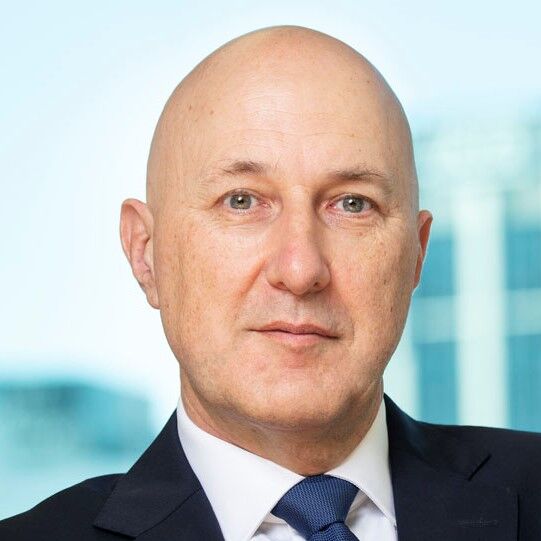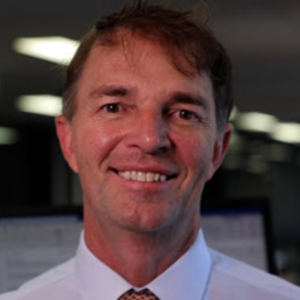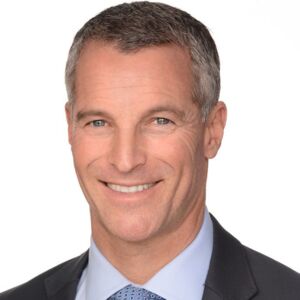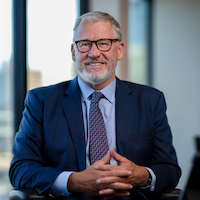Ex-Future Fund strategist on NZ Super's edge
By Elizabeth Fry

The investment head of New Zealand's NZ$57.3 billion sovereign wealth fund says most portfolios will perform poorly given heightened inflation, higher real interest rates and languishing growth.
"Very few assets are going to do well. This environment is bad for equities and bad for bonds, although it might be okay for some commodities," said NZ Super's investment chief Stephen Gilmore.
As for many investment chiefs, the big question for Gilmore is how long inflation will last.
"Will central banks have to keep hiking to get inflation back down to two per cent or do they give up on the two per cent and say something higher is good enough," he adds.
"These two different paths can mean quite different implications for markets and portfolios."
Despite the market turmoil, life is less scary for Gilmore, a local Kiwi who had spent nine years at the Future Fund - most recently as chief investment strategist - before joining Guardians of New Zealand Superannuation three and a half years ago.
NZ Super has an ultra-long-term investment horizon. It doesn't need to make major payments to the country's budget until the 2050s, allowing it to take risks that other investors cannot.
Consequently, Gilmore is a big believer in active management, taking bold and bigger risks in areas - where he believes NZ Super has an advantage - to generate greater returns.
The investment horizon is one of the reasons its investment approach differs from the Future Fund, despite the latter being to some extent modelled on its Kiwi cousin.
Yet, taking a long term view can be daunting as it hugely influences the way Gilmore's team does things.
Gilmore says there is a keen focus on ensuring that only those investments that exceed the fund's cost of capital are made. With equities and bonds having sold off forward-looking returns, the fund's cost of capital has consequently risen.
"So, it means you have to be more judicious with your investments," he explains.
Back to the future
Much of what Gilmore's team does is based on what's normal, and what equilibrium looks like.
"If your view is wrong and it turns out normal is something else, it could be embarrassing and costly," he warns.
For instance, long-term big-picture thinking requires the investment team to have a view on whether interest rates, including real rates, will return to their pre-global financial crisis levels or something else.
Investors now expect the US Fed to raise rates to 5 per cent next year as it tackles red-hot inflation.
Says Gilmore: "Even though forward real rates have gone up a lot - dragging asset prices down with them - there's more to play out if you think there will be a reversion to where real rates were before the financial crisis."
Further, the investment chief is also forced to look at the big picture issue of the very long decline in US inflation bond yields over the last 40 years, since the 1980s.
"Is that downward trend permanently broken? I don't know. If it is, what does that mean for market structure vulnerabilities," he says.
He notes that UK's defined benefit pensions were exposed to lower and lower rates. Recently, they had to sell assets to meet margin calls relating to hedging strategies as bond yields skyrocketed. Gilt yields have since returned to levels last seen before the political turmoil.
Gilmore points to other areas where potential liquidity mismatches might provide opportunities for a long-term investor.
TPA valuable
One thing NZ Super and The Future fund have in common is they both employ a total portfolio approach to portfolio construction and asset allocation.
Gilmore believes that TPA is more valid and even more valuable now.
"It makes an awful lot of sense to think about the whole portfolio in an environment where almost all assets will be hit by skyrocketing interest rates, especially when risk premia are rising."
From a total portfolio perspective, he goes on to say, it is easier to work out what can be diversified - not that there's much you can do right now.
"It's important to understand how your portfolio performs through a range of alternative scenarios."
To the investment chief, the advantage of looking at the portfolio as a whole rather than filling buckets with individual asset classes is that the overall portfolio meets the fund's ultimate objectives.
That contrasts with the standard strategic asset allocation approach, where funds invest a certain percentage of funds in each asset class.
"Therefore, each asset class will optimise that asset class, rather than the whole portfolio, so it's less efficient and potentially you get some misalignment between what you're doing and your ultimate objective," he argues.
Like his counterparts who use TPA, - including the Future Fund and TCorp - Gilmore finds the investment style hard to put into practice because people feel more comfortable working in teams or silos.
Plus, it is difficult to blend information from a top-down and bottom-up approach to investing to get the best outcomes.
But so far, so good.
Recently, NZ Super Fund reported a 7 per cent loss in the 2022 financial year - down from a whopping 30 per cent return for 2021.
However, that loss was less than half what its passive reference portfolio, comprising 80 per cent equities and 20 per cent bonds, would have lost - underlining the important contribution that active investment decisions made to overall portfolio outcomes.
Gilmore calls the result a spectacular performance since almost all the active strategies improved the portfolio performance relative to the reference portfolio.
In essence, the reference portfolio reflects NZ Super's risk appetite.
The highly liquid passive and fully currency-hedged alternative portfolio allows NZ Super to benchmark the performance of its actual portfolio and any value added through active management.
"To what extent are active investments giving us something we are not getting from the reference portfolio," he asks.
NZ Super funds its active investments out of the reference portfolio.
"Accordingly, if we were investing in something very equity-like, we would reduce the equity exposure from the reference portfolio," he explains.
Put simply, the reference portfolio is a simple transparent accessible portfolio that does a reasonable job of meeting the Guardian's mandate over time.
If the actual portfolio beats that reference portfolio by say, 100 basis points, that is a good result. A 700 basis point beat is extremely good.
Sidestepping savage markets
Specifically, NZ Super dodged the worst of the market rout by generating strong relative and/or absolute returns from investments in renewable energy, equity factor tilts, timber, real estate and global macro.
In addition, it continued to do well by deploying internally managed strategies, including dynamic asset allocation.
"Our equity factor tilts had been a detractor in the past, but during the last financial year, with interest rates backing up and growth stocks getting hit relatively harder, our tilts contributed to the value add," says Gilmore.
As for sustainability, in the third quarter, the sovereign wealth fund tipped 40 per cent of its investment portfolio into low-carbon indexes as part of a sustainability push.
This considerably improved the ESG profile of the portfolio and made it more concentrated as it reduced the number of stocks.
"We had this debate about whether we should have something customised or not, and in the end, we went for simplicity. It is much easier to take something off the shelf.
NZ Super first reduced its carbon exposure in 2017 as part of its climate change investment strategy.
The original decision to reduce the carbon exposure in the portfolio flowed directly from the legislative mandate for the fund, which among other things, requires the Guardians to maximise return without undue risk.
The team thought they were not getting compensated for taking on carbon risk, so it reduced that exposure.
The latest decision to improve the ESG profile came from work that looked at where the fund needed to be during the next decade. In addition to the risk/return element, the mandate also requires the Guardians to adhere to best practice portfolio management and avoid hurting New Zealand's reputation.
"All of those things point toward embracing sustainable investment," Gilmore says.
"Now, of course, we didn't want to compromise on any of the elements of the mandate. We still want to maximise return without undue risk. But we thought we needed to think more holistically about sustainable investment."



